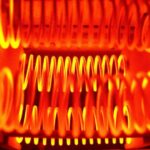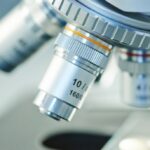Eddy current testing requires us to determine the components of the impedance of the detecting coil or the potential difference across it. Most applications require the determination only of changes in impedance, which can be measured with a high degree of sensitivity using an AC bridge. The principles of operation of the most commonly used eddy current instruments are based on Maxwell’s inductance bridge, in which the components of the impedance of the detecting coil, commonly called a probe, are compared with known variable impedances connected in series and forming the balancing arm of the bridge.

The input to the bridge is an AC oscillator, often variable in both frequency and amplitude. The detector arm takes the form of either a meter or a storage cathode-ray oscilloscope, a phase-sensitive detector, a rectifier to provide a steady indication, and usually an attenuator to confine the output indication within a convenient range. Storage facilities are necessary in the oscilloscope in order to retain the signal from the detector for reference during scanning with the probe.
The highest sensitivity of detection is achieved by properly matching the impedance of the probe to the impedance of the measuring instrument. Thus, with a bridge circuit that is initially balanced, a subsequent but usually small variation in the impedance of the probe upsets the balance, and a potential difference appears across the detector arm of the bridge.
Although the Maxwell inductance bridge forms the basis of most eddy current instruments, there are several reasons why it cannot be used in its simplest form (i.e. Hague, 1934), including the creation of stray capacitances, such as those formed by the leads and leakages to earth. These unwanted impedances can be eliminated by earthing devices and the addition of suitable impedances to produce one or more wide-band frequency (i.e. low Q) resonance circuits. Instruments having a wide frequency range (i.e. from 1 kHz to 2 MHz) may possess around five of these bands to cover the range. The value of the impedance of the probe is therefore an important consideration in achieving proper matching and, as a result, it may be necessary to change the probe when switching from one frequency band to another.


